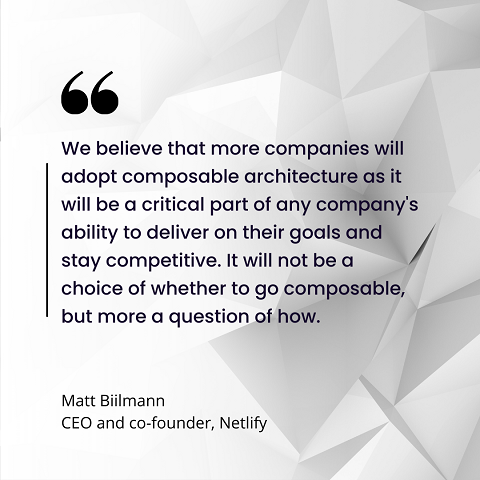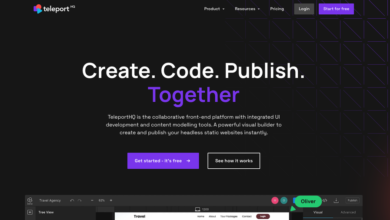Web Development Report Details Composable Architecture Benefits

A new report from Netlify has found developers are rapidly adopting composable web architecture as they move away from monolithic models.
The State of Web Development 2023 is based on a survey of more than 6,400 developers globally and summarizes key trends shaping the future of web development. The report reveals composable architecture — decoupling the front end and back end of the tech stack — is now the preferred alternative to monolithic models.
The report also provides insight into the intersection of artificial intelligence (AI) and the use of composable web architecture. Netlify provides a composable web platform to help companies transition to modern architecture.
Key findings in the report include the following:
- 75% of developers surveyed have built solutions with composable architecture in the past year.
- 58% see higher productivity with composable architecture.
- 80% of developers are using AI to automate tasks and improve productivity, but monolithic architecture makes it hard to take full advantage of AI.
- Next.js is the top web development framework, with Astro gaining fast.
“One of the big surprises was the incredible excitement around Astro in the front-end framework landscape,” Matt Biilmann, CEO and co-founder of Netlify, told ITPro Today. “That seems to come at the expense of Next.js dropping in usage and satisfaction while still clearly being the largest framework in the survey.”
The State of Web Development and the Challenges of Integrating AI
The vast majority of developers (80%) have integrated AI into workflows, with 70% using it to automate manual tasks and 42% leveraging it to improve productivity and knowledge sharing.
Biilmann noted that developers are wary of a wide breadth of risks when it comes to AI implementation. Seventy percent are concerned about erroneous outcomes, and over half believe that leveraging AI can lead to new security issues and confidential data leaks. Fortunately, developers are already discovering best practices to help mitigate these risks, he noted.
For example, Biilmann said IT teams can implement a retrieval-augmented generation (RAG) approach to ensure AI models only draw from a database of verified facts to limit misinformation, and developers are already creating responsibility models to help address the use of prompt engineering.
“Safely implementing AI will require a high degree of flexibility to adjust models based on potential issues with their tech stack,” he said. “Composable architecture can ensure that problematic components can be switched out as needed.”
How to Get the Benefits of Composable Architecture
Developers say composable architecture delivers tangible business results:
- 37% report cost savings
- 48% cite faster time-to-market
- 48% see website performance gains
- 43% have greater ability to customize customer experiences

However, 44% say they would immediately adopt composable architecture if they had a clear transition path.
Biilmann said huge replatforming projects have a very high failure rate and tend to deliver results too late in the future for today’s environment. In his view, companies must adopt an evolutionary approach that allows them to deliver results quickly on top of their existing content and data sources.
“We believe that more companies will adopt composable architecture as it will be a critical part of any company’s ability to deliver on their goals and stay competitive,” he said. “It will not be a choice of whether to go composable, but more a question of how.”
About the author
 Sean Michael Kerner is an IT consultant, technology enthusiast and tinkerer. He consults to industry and media organizations on technology issues.
Sean Michael Kerner is an IT consultant, technology enthusiast and tinkerer. He consults to industry and media organizations on technology issues.



